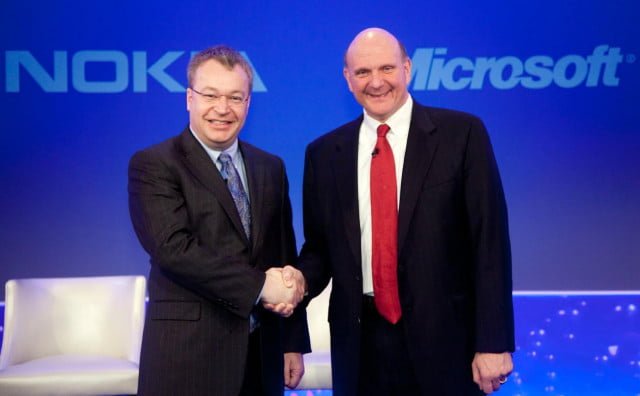Microsoft Failed Acquisitions
Microsoft: A Company That Likes To Buy
Microsoft has been successful in many of its acquisition throughout its history. Some of the successful ones are Mojang-Minecraft, Skype Technologies, Visio Cooperation, Forethought Inc.-PowerPoint, RenderMorphics-Direct3D, Grove Networks-OneDrive, and Perceptive Pixel-Surface Hub. Despite a long list of fruitful purchases, Microsoft is more known for its failure to capitalize on its new toys. I have listed Skype Technologies as a success story. Many people actively disagree with that notion. However, I argue that Skype has not been a failure. Acquisitions, like Skype, can be argued about for a long time as to whether they have been successful or not. That is not true for all of Microsoft’s purchase of other companies; there is no doubt about these acquisitions being busts. Two of Microsoft’s biggest busts are two of its biggest purchases. The companies involved these ill-fated mergers are aQuantive and Nokia. Let us first look at aQuantive. It was bought by Microsoft on May 18, 2007, for $6 billion dollars. AQuantive was an advertising company that specialized in digital marketing. Its products and platforms included Atlas Solutions, DRIVE Performance Solutions and Avenue A/Razorfish. At the time of the purchase, aQuantive was one of the biggest advertising agencies in the world. AQuantive was Microsoft’s biggest acquisition when it was bought. In 2012, however, it became Microsoft’s second-biggest write-down.
aQuantive: No Ads Placed
AQuantive was bought to make Microsoft a competitor in the online advertising space; to compete with the online giant that is Google. However, Microsoft was too late to the new era of online internet service. By 2012, five years after aQuantive became a part of the Microsoft family, Microsoft’s online business was still not profitable, including Bing.com. In fact, Bing only became profitable in the past two years. While Bing has started to make money, Microsoft’s other online businesses were not so successful. In 2014, Microsoft stopped placing original articles on MSN.com and started serving third-party ads instead of its own advertisements. That has left the profitable Bing as Microsoft’s only fully-controlled online service. AQuantive was a failure because Microsoft bought it as part of an ambitious project, yet showed little of the ambition and commitment that that project needed to succeed. This is not the last time that will make this fatal mistake.
Nokia: A Failure to Launch
In what has become Microsoft’s most ill-advised acquisition, on April 25, 2014, Microsoft completed the purchase of Nokia’s phone business for $7.2 billion dollars. Everybody knows who Nokia is, the fabled mobile phone manufacturer who has fallen rapidly from grace. When Microsoft garbled-up Nokia smartphone division, Nokia was only shipping 5 million phones per quarter. At that time over 200 million smartphones were being shipped per quarter. Moreover, Nokia was not profitable, and it had not been for a long time. Nokia was the major manufacturer of Windows Phones with 90% market share. From that point of view, Microsoft had no real choice but to buy Nokia, given that Nokia had started making Android phones. Making a bad purchase based on circumstances out of your control is still a bad purchase. However, it is nothing compared to doing everything to sabotage the Nokia deal. That is exactly what Microsoft and specifically Satay Nadella did.
Nadella was against the Nokia from the very beginning. It all started with the cancellation of the “Lumia 1030”, the most legendary Lumia that was never released. This was quickly followed by the underwhelming Lumia 940 and 940XL, released in 2015, that failed to create any excitement amongst the loyal Windows Phone fanbase. The two “flagship” Lumias were released with Windows 10 Mobile, which many Windows fans agree was worse than Windows 8.1. Almost the entire value of Nokia was written off by Microsoft on July 28, 2015, with $7.2 billion dollars being written off and 7, 800 jobs being cut.
Windows Phone: It Is Dead!!!
Windows 10 Mobile has not been given much love by Microsoft. When it was placed permanently on Redstone 2 Feature 2 maintenance branch, fans began to worry that the death of Windows phones was at hand. When Microsoft decided to remove itself from the mobile phone market and retrench, the picture was clearly on the walls; Windows Phone was dead. The final nail was tightly placed in the coffin when Microsoft Executive Joe Belfiore went on Twitter to say that Windows Phone would only be getting security updates and other patches going forward. He also stated that no new hardware would be made using Windows 10 Mobile. This is another case of Microsoft buying a company to be a part of a grand and ambitious project and then decided not to match those great ideas with effective and precise execution.
Microsoft: Its All About the Profits
Microsoft has always been an ambitious company, no one can deny that. However, its ambitions are not always given the runway they need, especially under the leadership of Satya Nadella. Microsoft makes a lot of profit and any endeavor they peruse that does not show a path to profitable will be cut. That was the fate of aQuantive and Nokia. They were not showing signs of profitability nor were unique in the market. With them, Microsoft was gaining neither market share nor mindshare; this made them killable and thus they were killed.
